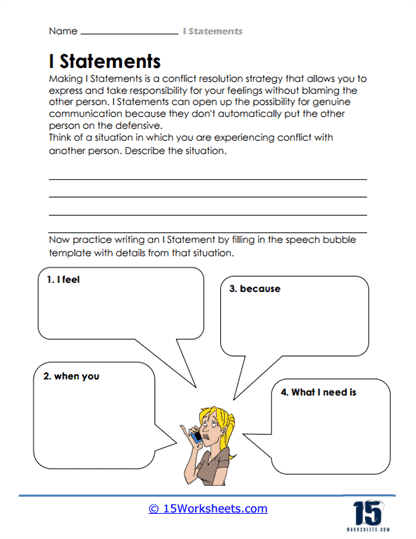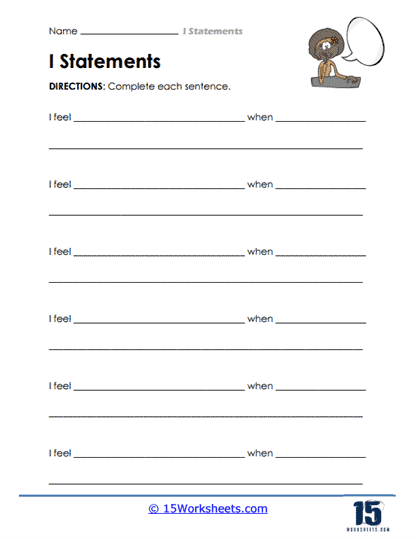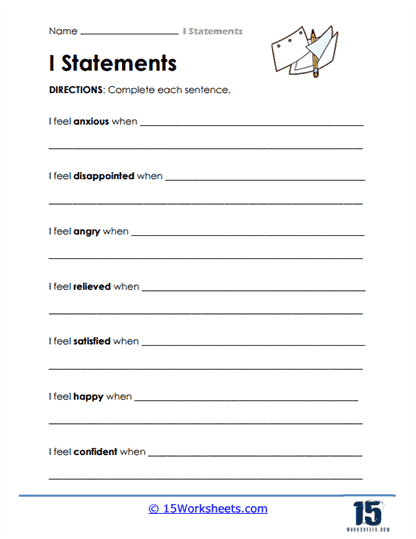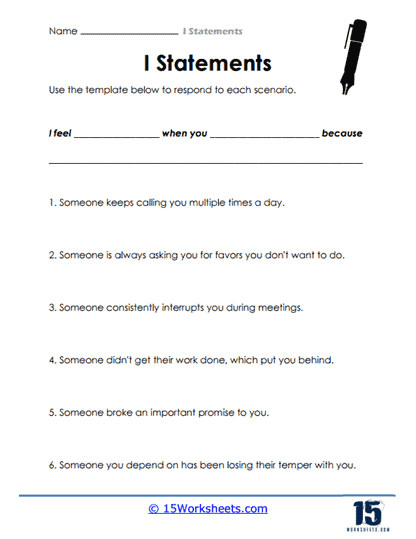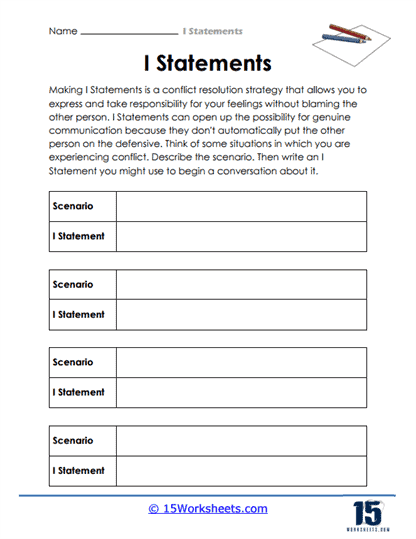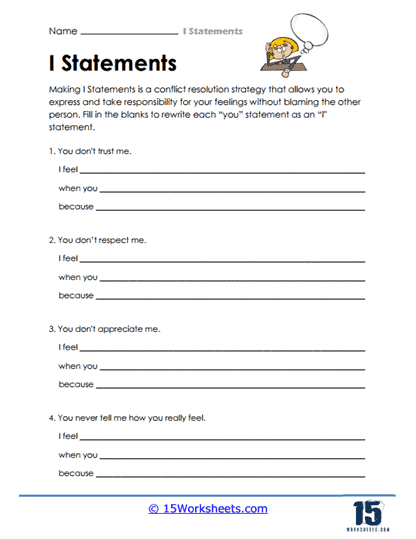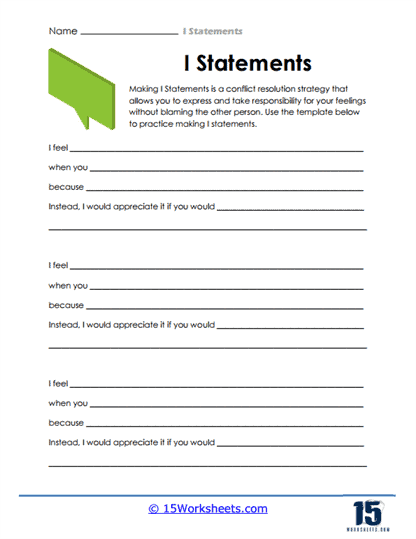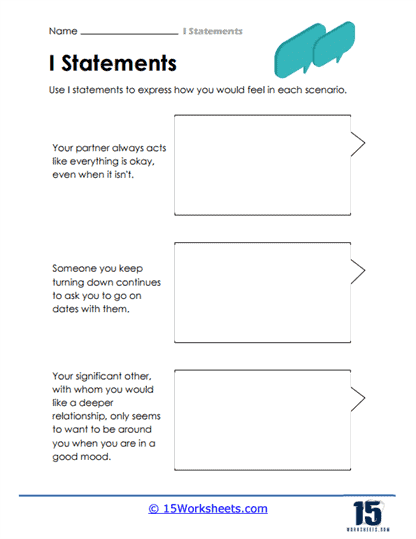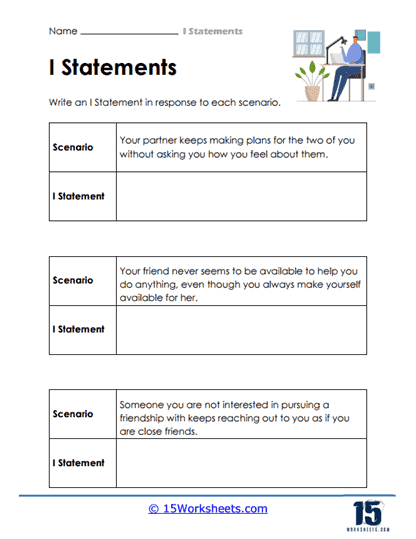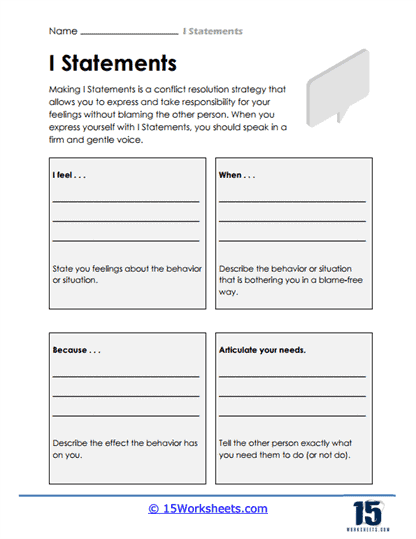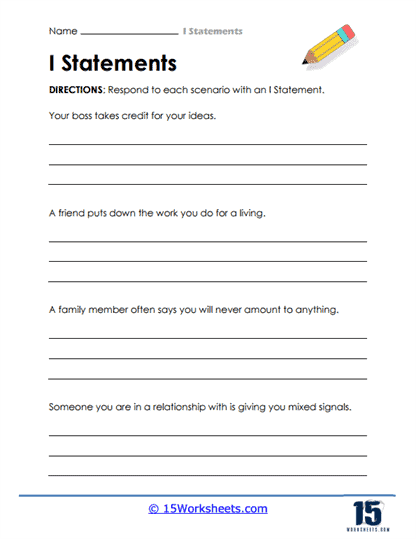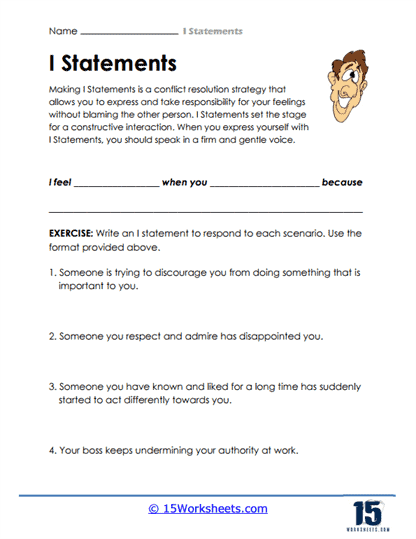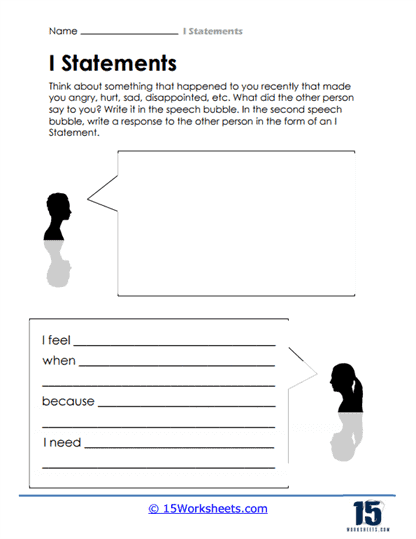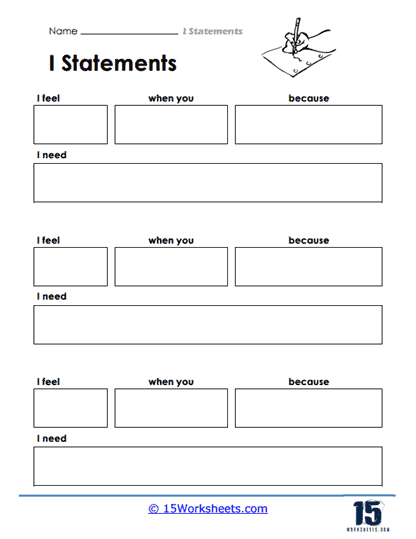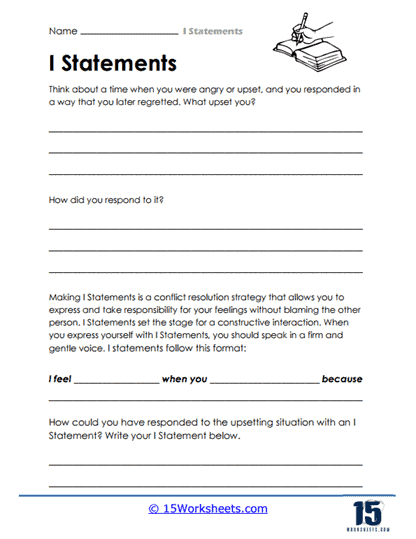I Statements Worksheets
All About These 15 Worksheets
This series of 15 worksheets focuses on helping students develop effective communication skills through the use of I statements. The exercises provide a structured approach to teach students how to express their feelings, thoughts, and needs in a clear and assertive manner. By mastering the art of using I statements, students can enhance their interpersonal relationships, resolve conflicts, and foster open and respectful communication. Through these worksheets, students will:
- Learn how I statements can express emotions, assert boundaries, and promote effective dialogue;
- Identify their feelings, express their needs, and take ownership of their experiences;
- Master the strategies for using I statements to address disagreements and find mutually beneficial solutions;
- And develop healthy communication habits beyond using I statements.
Overall, this series of worksheets equips students with the essential skills to express themselves confidently and assertively using I statements. By emphasizing self-awareness, active listening, empathy, and conflict resolution, these worksheets enable students to cultivate healthy communication habits and build strong interpersonal relationships. Through practice and application of these skills, they also develop the ability to communicate with clarity, empathy, and respect, fostering an environment of effective and harmonious communication.
What Are I Statements?
“I statements” or “I-messages” are a communication technique used to express one’s feelings, thoughts, or needs in a non-confrontational and assertive manner. They are often employed in conflict resolution and interpersonal communication to avoid placing blame or making accusations, and instead focus on one’s personal perspective and emotions. By using “I statements,” individuals can reduce defensiveness in the listener and foster a more open and productive dialogue.
An “I statement” typically includes three components:
1. Feeling or Emotion
Start by stating how you feel or what emotion you are experiencing in response to a particular situation. This allows the listener to understand your emotional perspective without feeling attacked or judged.
Example: “I feel…”
2. The Specific Event or Behavior
Describe the event or behavior that triggered your emotion, without making generalizations or assumptions about the other person’s intentions.
Example: “I feel… when you…”
3. The Impact or Effect
Explain the impact of the event or behavior on you, your needs, or your well-being. This can help the listener understand why the situation is important to you and what you need to resolve the issue.
Example: “I feel… when you… because…”
For example, instead of saying, “You never listen to me,” which may cause the listener to become defensive, you could use an “I statement” like, “I feel ignored when you look at your phone while I’m talking because it seems like my thoughts and feelings aren’t important to you.”
By using “I statements,” you can communicate more effectively, reduce tension in conflicts, and create a positive environment for resolving issues and building stronger relationships.

